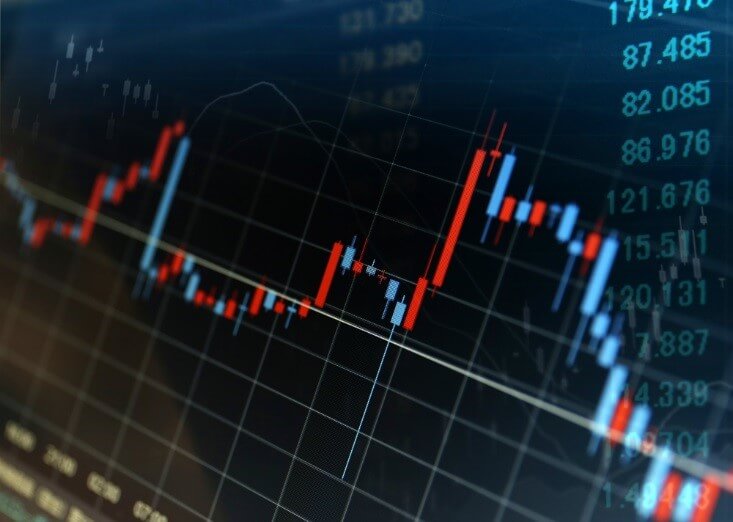
Forex intraday trading strategy explained.
Forex intraday trading strategy is one of the most common ways of trading currency pairs. It’s a fast-paced, micro-trading strategy where you must make quick decisions. If you are pondering on starting intraday trading in Forex, we give an overview of the main strategies.
What is day trading or micro-trading?
Before we see intraday trading in Forex, let’s look at micro trading in general.
Day trading is an investment method that consists of taking positions to purchase and sell financial instruments during a single session. It is, therefore, important here that all positions are closed at the end of each trading day. Of course, this method often requires making many investments in a single session by multiplying the openings and closings of positions. The goal is, therefore, to take advantage of small price variations and bet on volume and not on duration.
Micro-trading is essentially the same thing and consists, as its name suggests, of trading micro-movements, i.e., very short-term movements.
This investment method, known as intraday trading, is a technique reserved for traders with plenty of time to invest in the markets. Indeed, if you only speculate for a few hours a day, you will be unable to make the best use of the appropriate strategies. A day trader, therefore, needs both time, concentration, dedication, and excellent knowledge of the market and technical and fundamental analysis, news events, etc. To speculate with day trading or micro-trading, it is necessary to place orders very quickly and be reactive to the slightest price movement.
Of course, and as it is a question here of multiplying positions with a low price difference, it is necessary to follow a precise strategy that you must put in place according to your objectives.
Ultimately, day trading or micro trading are investment methods that are opposed to long-term trading, which amounts to keeping an asset or a position longer, namely several days, weeks, months, or even years.
What is the difference between intraday trading and traditional trading?

There are, of course, differences between intraday trading and regular trading. The first difference concerns the timing of closing positions. If a position can be kept open for several days, weeks, or even months or years, an intraday trading position should automatically be closed before the end of the session. This means that a day trader always starts his days with no open position. Regular trading is trading in which the positions run over several sessions or at least two.
Why is intraday trading so popular in Forex?
Forex is a volatile and highly liquid market. These are the predispositions for profitable short-term, intraday trading and Forex day trading strategies.
The market’s liquidity corresponds to the ease and speed with which one can enter and exit a position. When liquidity is high, more counterparties are ready to buy or sell the traded assets, and orders are executed more quickly, which is essential in the case of intraday speculation.
The volatility of an asset or a market is also an important element because it determines the speed at which prices move. The higher the volatility of an asset, the more its price will undergo variations in a shorter period of time.
Finally, it will also be necessary to know the trading volume of the targeted asset(s), which measures how often these assets are bought or sold over a given period. An asset that shows a large trading volume is an asset that investors are interested in.
Traders who use day trading often look for assets or markets that meet these different criteria, including high liquidity, high volatility, and a large trading volume. And Forex is the market that meets all these criteria.
What is the best Forex intraday strategy?

Let’s look at the trading strategies most often used by Forex traders who speculate intraday.
Trend trading
Trend trading or trend trading is one of the most popular strategies among day traders. The latter here tries to analyze the direction of the price of an asset and buy and sell it according to the direction of the trend. As part of a trend trading strategy, a buy position is taken when the trend is detected as clearly bullish, and a sell position is taken when the trend is defined as clearly bearish. Of course, this first strategy is not exclusively reserved for intraday traders but is also sometimes used on long positions. Some traders decide to keep their position open as long as the trend continues. In the context of day trading, however, it will be necessary to close this position before the end of the session.
Swing trading
Swing trading is the second most popular strategy in day trading. This strategy takes advantage of short-term price variations by including that a stock price never goes in the same direction within a trend. A swing trader will thus seek to profit from upward and downward variations over a short period. Here, the swing trading strategy is exclusively suitable for short-term trading, and swing traders focus on small reversals in the variations of an asset. To do this, they must, of course, be able to spot these reversals in advance.
Scalping strategy
Next comes the scalping strategy. This is also a trading strategy adapted to the short term whose goal is to make small but frequent gains. It is, therefore, the success rate of the positions that are important here. As you will have understood, scalping requires many positions taken in a session with a multiplication of operations on small movements and, therefore, with very low price differences. There is no question here of letting the gains run. One of the specificities of this strategy is that it requires a strict and reactive exit strategy because losses can quickly exceed profits in the opposite case. It should also be noted that while scalping is not specifically designed for intraday trading, most investors who use it prefer to close their positions before the close of the session in order to avoid overnight financing costs.
Mean reversion strategy
Finally, the last Forex trading intraday strategy we will discuss here is mean reversion. It is a strategy based on a theory that prices and other measures of value, such as price-to-earnings ratio or PER, tend to always revert to the historical average. The mean reversion strategy, therefore, mainly uses data from technical analysis with certain indicators, such as moving averages, in order to identify assets whose recent performance is far from the historical average and which can therefore return to it. As you will have understood, it is, above all, a question of trying to take advantage of the return movements of prices towards this historical average.
The best indicators for Forex intraday trading strategy

In order to follow market trends, volatility, volumes, and momentum and easily spot entry and exit points, here are the main indicators to use if you are a Forex intraday trader.
- Moving Averages
- Bollinger Bands
- Relative Strength Index (RSI)
- Commodity Channel Index
- Stochastic Oscillator
Risk management in Forex intraday trading strategy
As we quickly mentioned above, Intraday trading is also a risky mode of investment that requires good knowledge of the market, analytical skills, and online investment experience.
Risk management is therefore very important here, and day traders generally put in place a real risk management strategy and put in place measures in order to avoid the worst situations and thus try to minimize their possible losses. . Risk management can, for example, go through the placement of specific orders such as stop loss orders or limit orders. These orders make it possible to automatically cut a position if a predetermined loss threshold is reached.
Being able to cut your losses in the event of poor trend anticipation is indeed one of the necessary prerequisites for any trading strategy. Still, it is probably worth even more concerning short or very short-term strategies such as day strategies.
The best way to effectively manage risks is to establish a strategy in this sense and, therefore, to have sufficient experience to determine a gain/risk ratio adapted to your capital and your profile. Experience will, of course, be very important here because it takes time and training to be able to correctly assess this type of risk.
Which chart and time frame to use for day trading?

Investing in day trading requires using specific market charts that allow you to customize the frequency displayed. Indeed, a day trader uses shorter time units than a regular trader. In general, we will favor 30 minutes or less units as part of these strategies and drawing supports and resistance levels and determining the trend.
Which analysis should be favored for day trading?
Day trading is a mode of investment that requires you to detect trends quickly and be highly responsive. For this, it will be necessary to perfectly master the technical and graphic analysis with its various volatility indicators, trend, or support/resistance levels. Of course, fundamental analysis is also important because certain events can cause interesting price movements in the short term.




